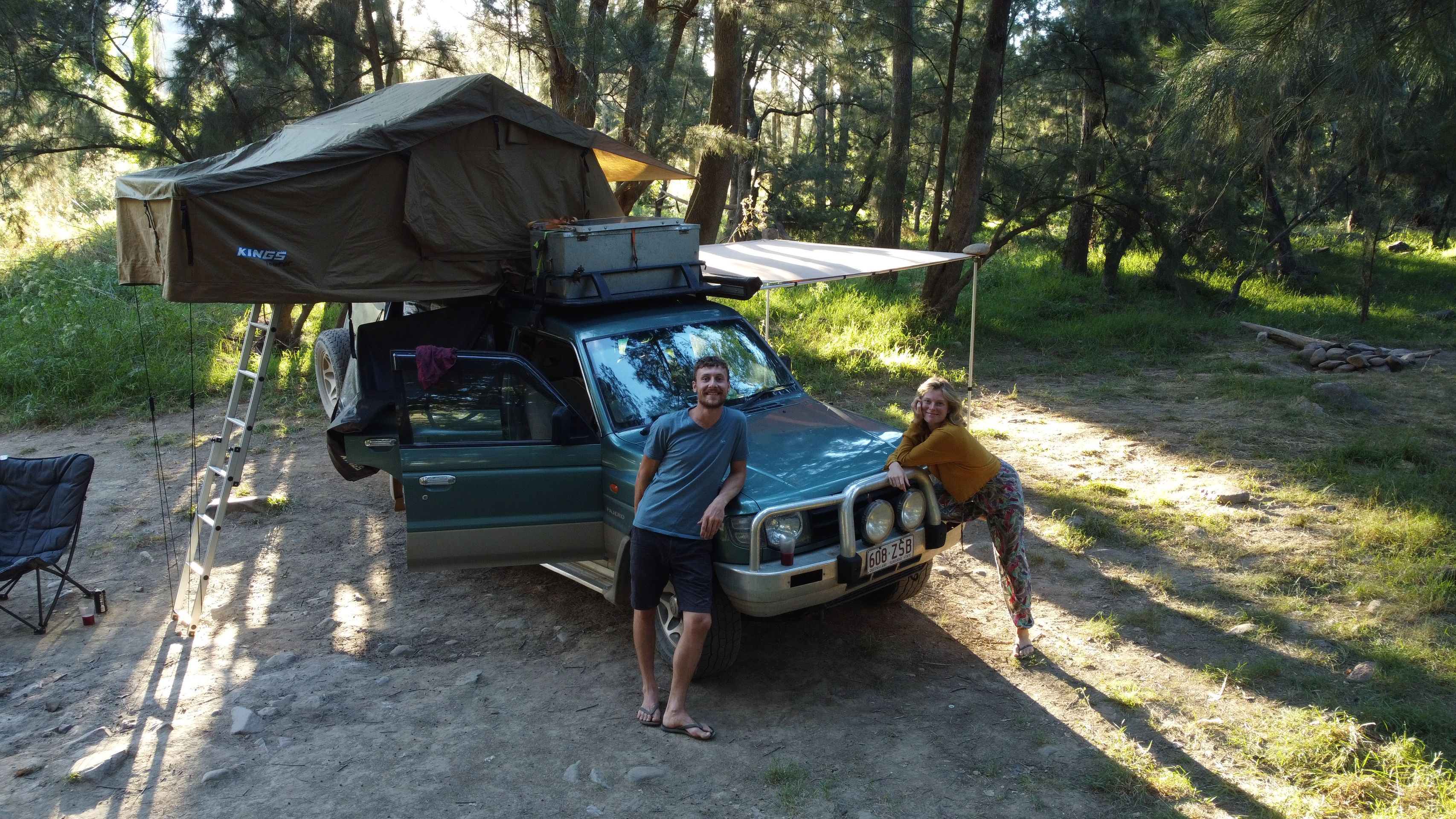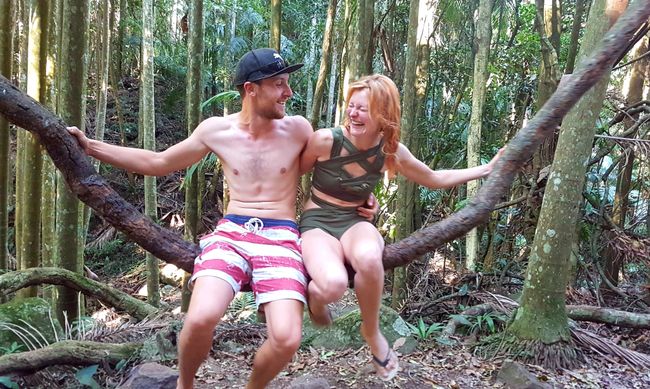ฤดูหนาวในประเทศออสเตรเลีย
ที่ตีพิมพ์: 11.06.2021
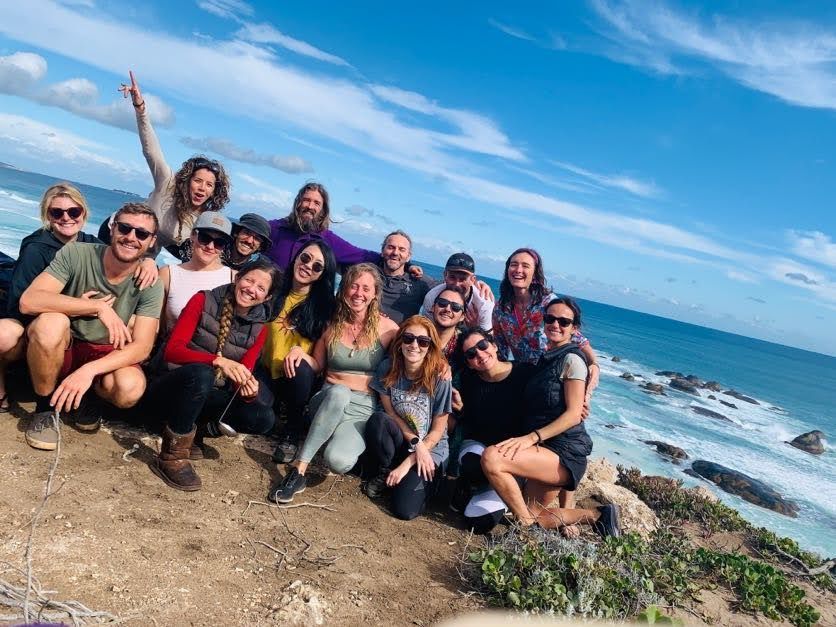
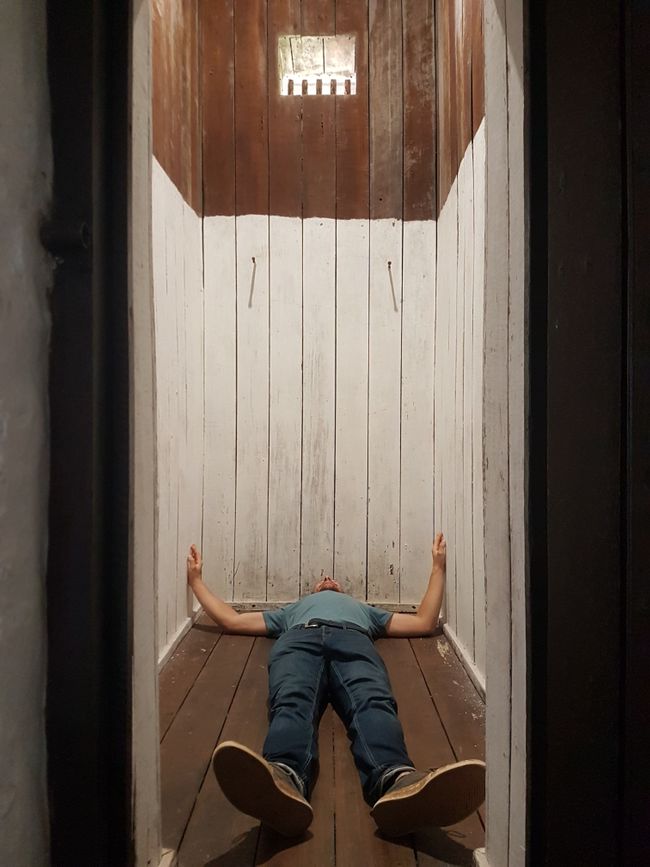
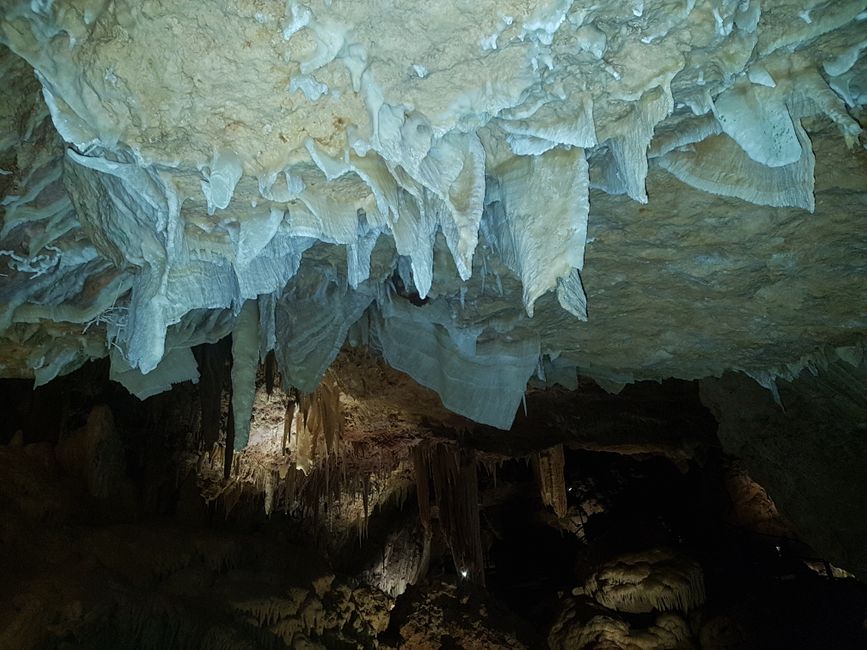
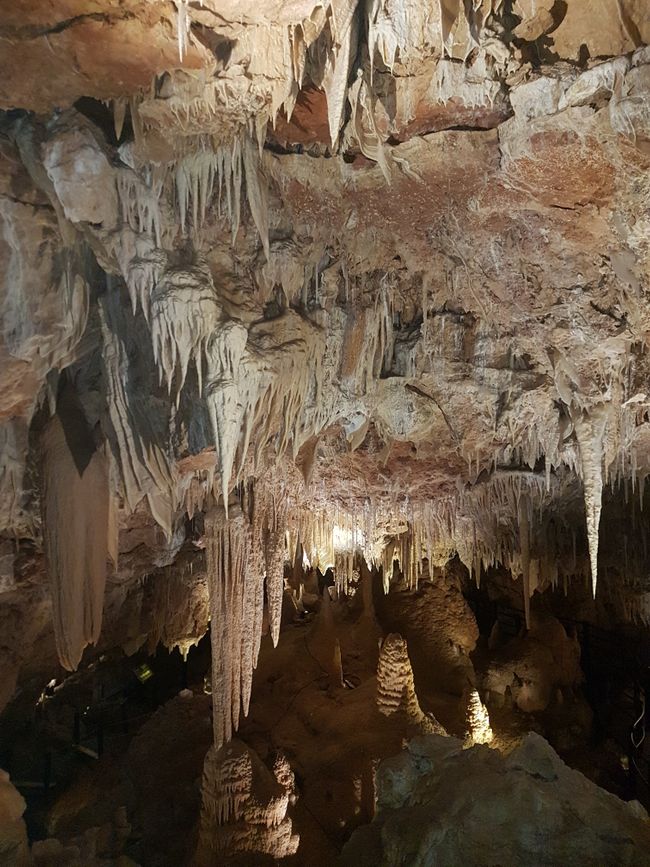
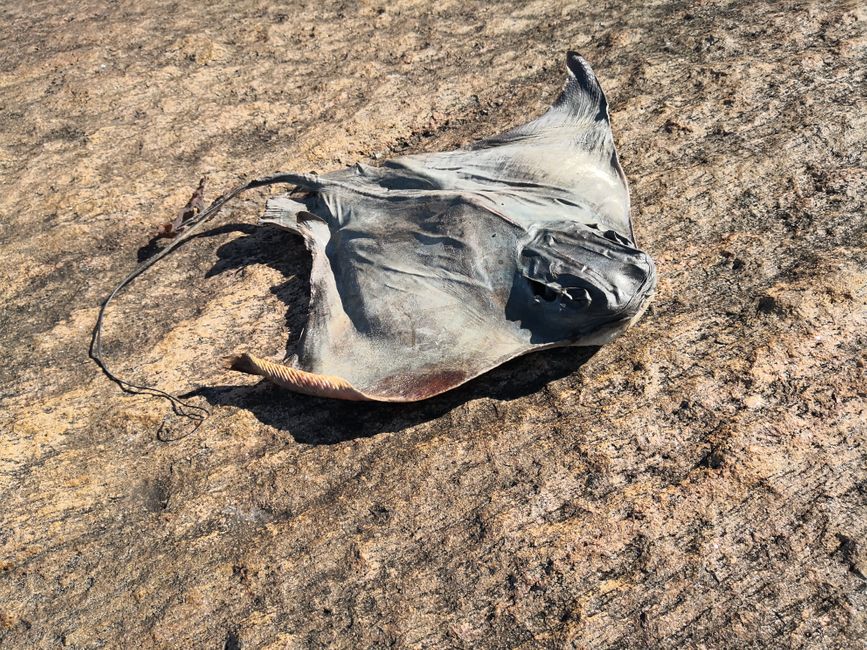
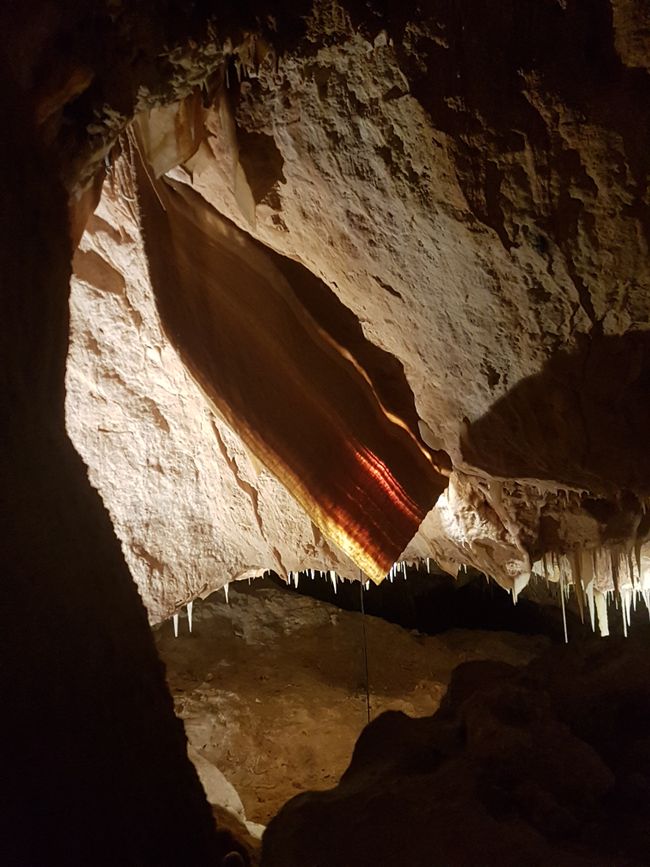
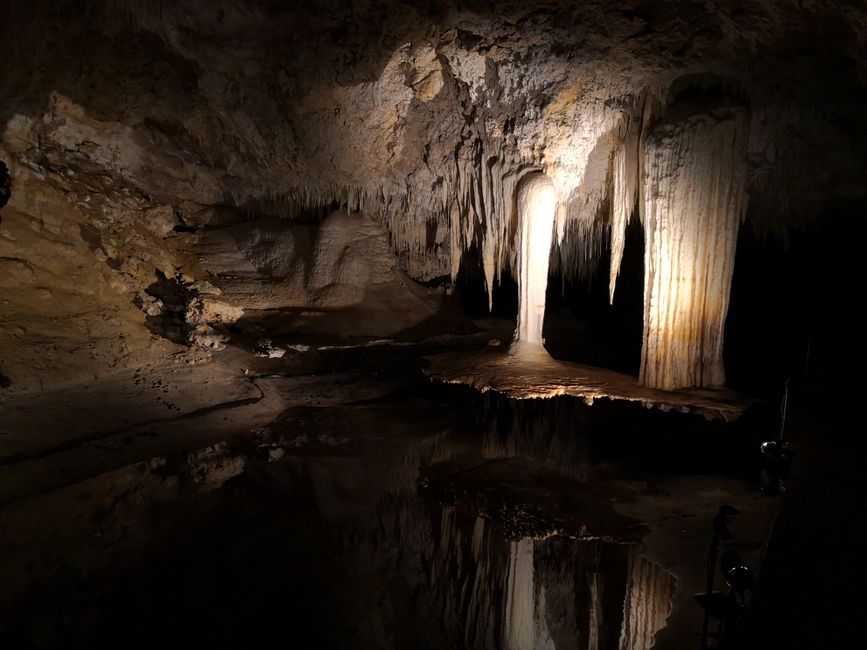
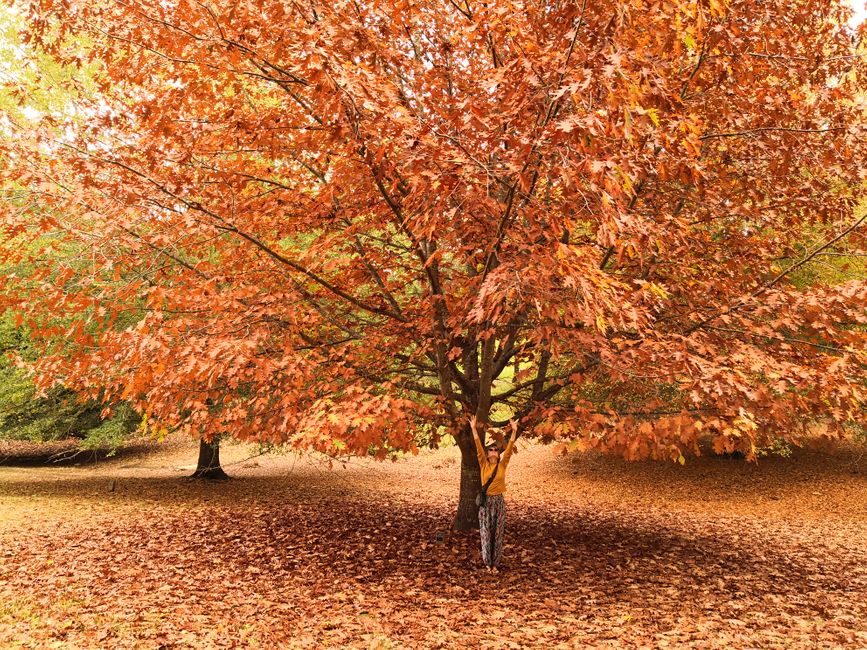
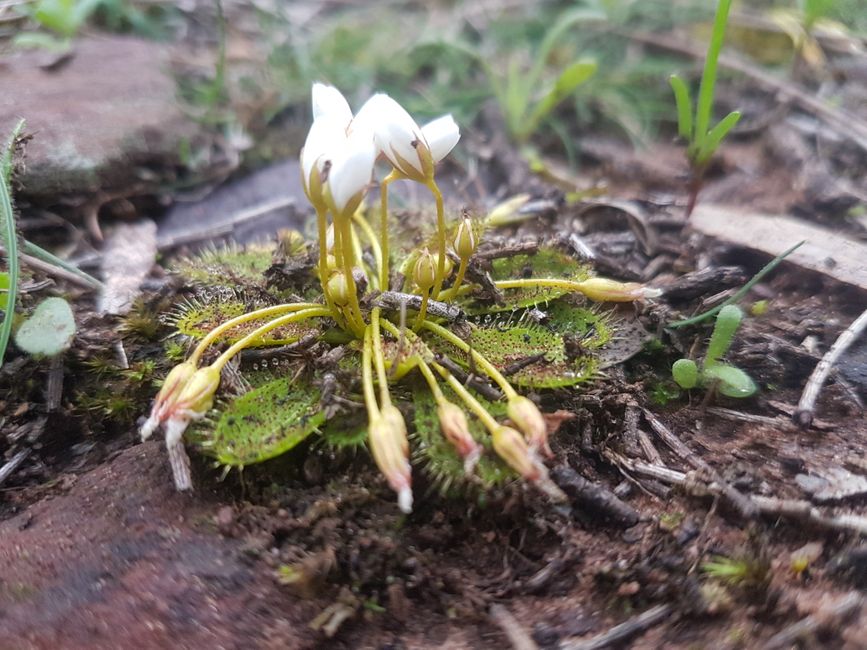
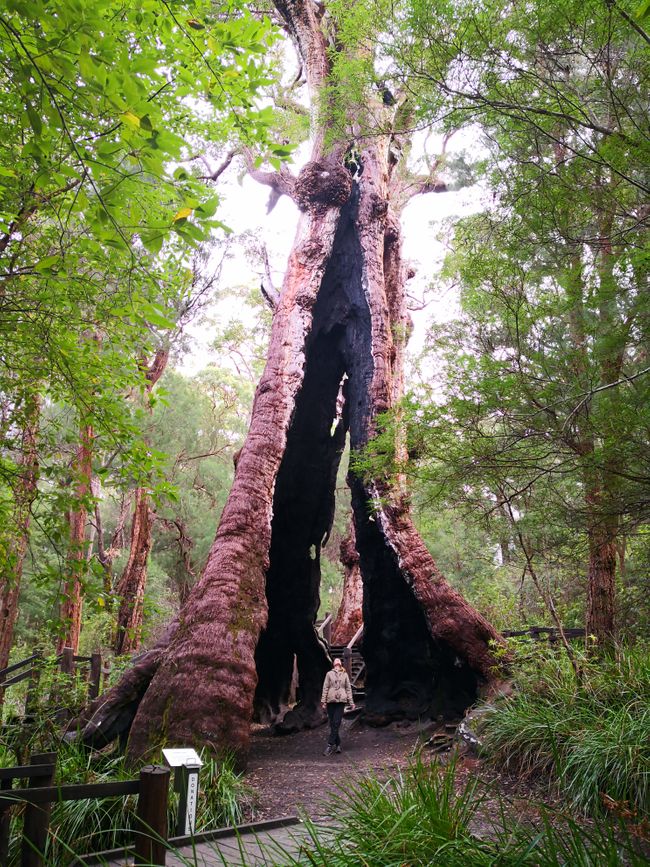
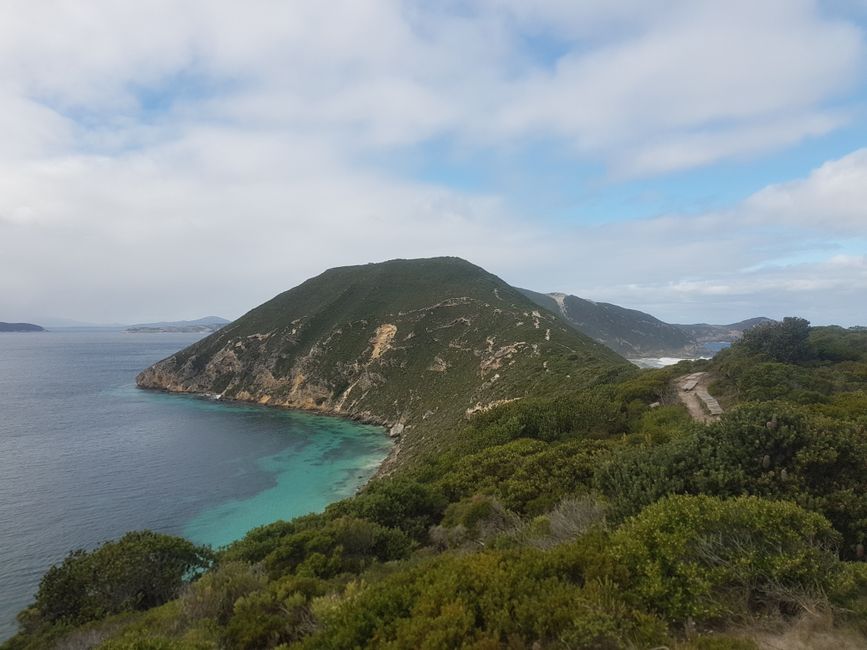
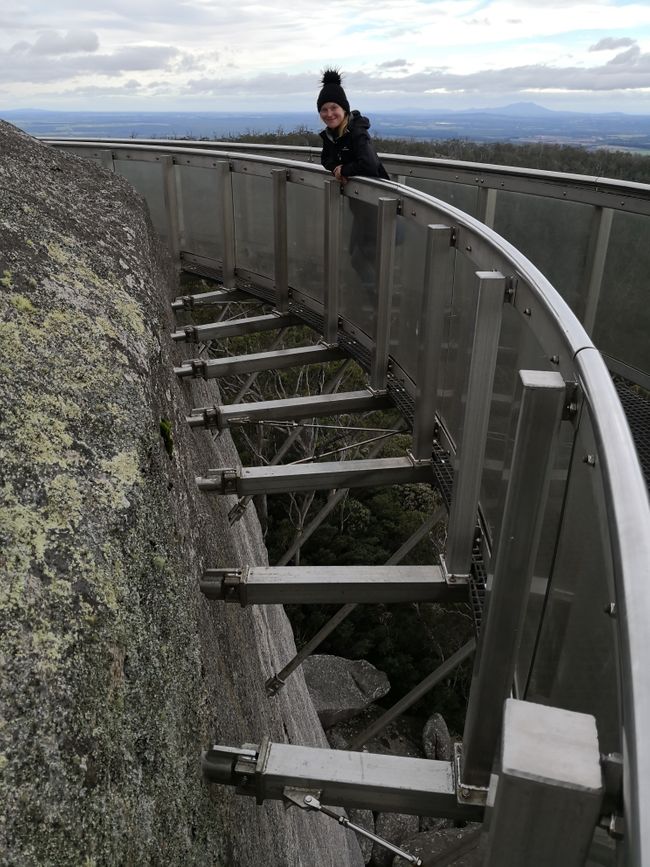

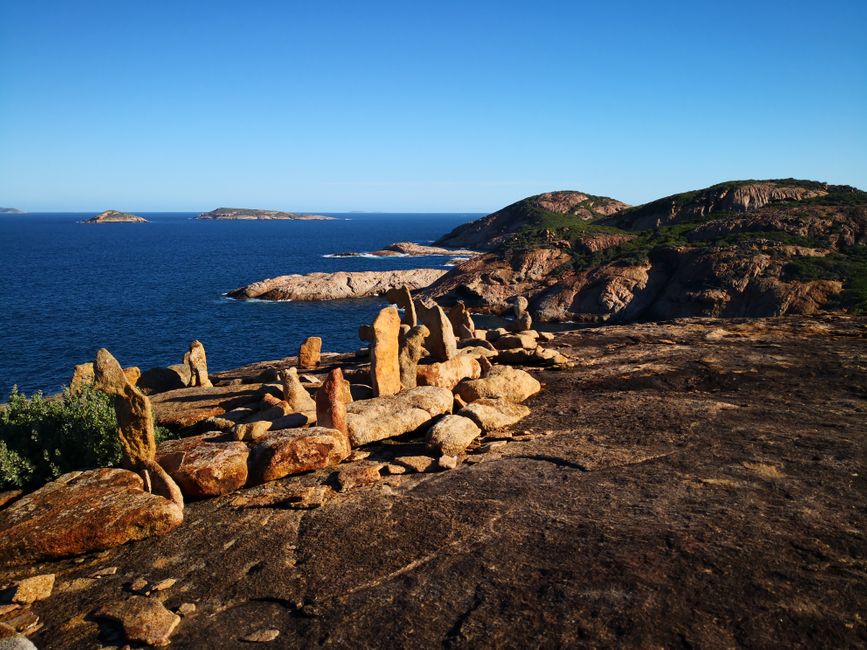
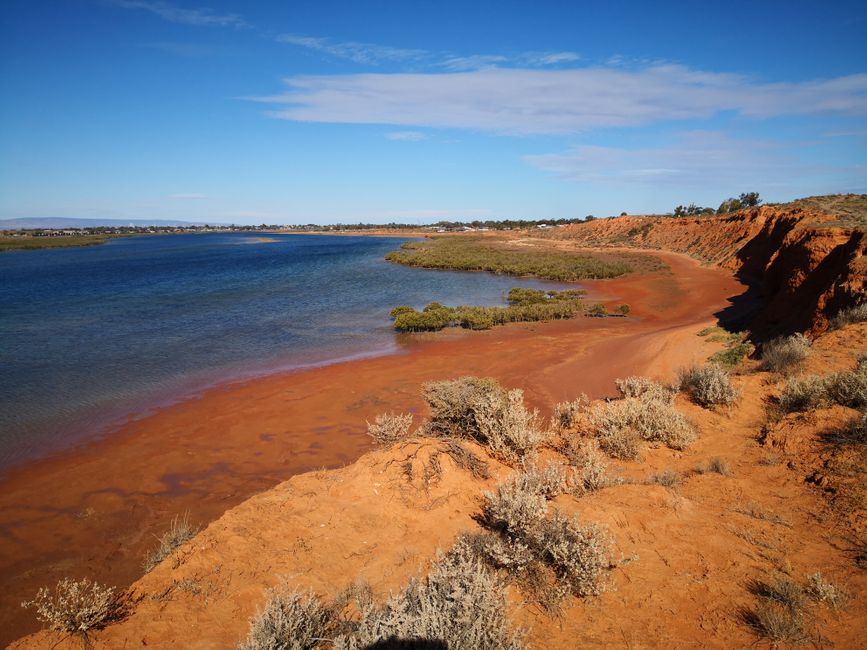
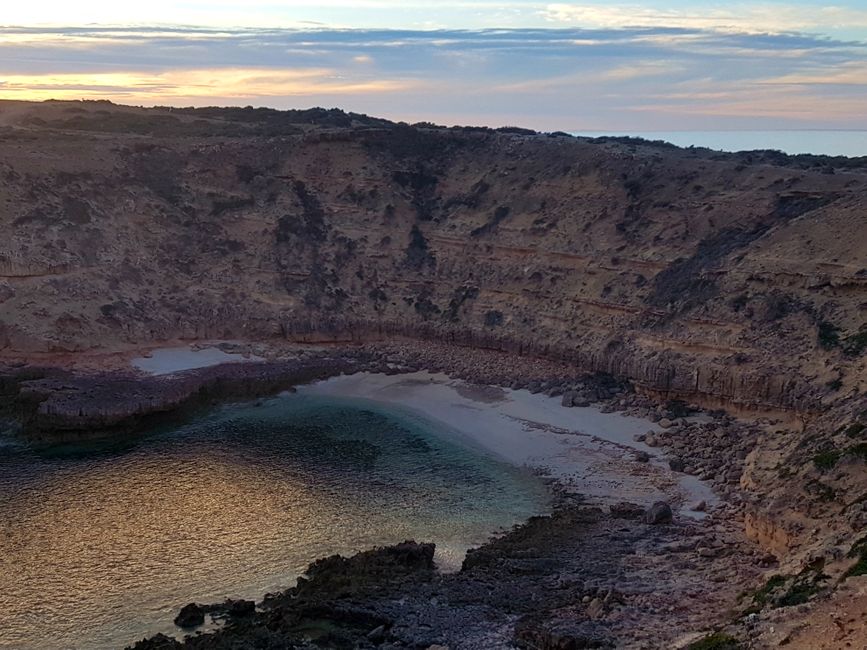
สมัครรับจดหมายข่าว
Before we parted ways with Margaret River, we had a special experience: we attended a Yoga & Adventure Retreat together. I didn't really have a clear picture of what it would be like, even though I was the one who signed us up. Originally, it was supposed to be a camping event on a permaculture farm, but when we left Belinda's family, we were glad that the organizers had found an alternative. It was raining and not particularly warm. The new location was a cabin in the forest with a spacious living room on the ground floor, where a fire was burning in the fireplace and everything was beautifully decorated for the introduction round. We settled into our beautiful room upstairs with sloping ceilings, which was definitely more comfortable than our tent. First, we relaxed and had a chai tea with meditation, then we went outside (the rain had just stopped) and played a very amusing icebreaker game, where everyone linked their name with a movement. Everyone had to imitate the movement and say the names out loud. Later, we had to repeat the movements of someone else and associate them with the correct name. After some initial hesitation, this learning method worked great for me, but it didn't help Matze with his short-term memory for names. I'm pretty sure he got the hang of it by the 3rd day though. After a delicious vegan lunch, we went for a short hike along the rocky coast at 'Cosy Corner'. We were advised to stay focused on ourselves, to observe and try not to talk. Some people found it really difficult, especially when Matze chose a slightly risky route and I wanted to warn him. But I swallowed my words and focused on myself. Since we were walking mostly on rocks and there was no trail, we had the freedom to choose our own 'paths'. We stopped twice as a group and it was difficult for me when we sat on a cliff, closing my eyes, holding the hands of strangers I barely knew. But it also strengthened me in an inexplicable way. After playing music with one of the volunteer farm helpers, who cooked for us throughout the event, I fell into bed exhausted. The next morning, after breakfast, we went stand up paddling at the river mouth in Augusta. When we first stepped onto the boards after some stretching, I was honestly surprised that I didn't immediately fall into the water. It was pouring rain. Elisha, one of the participants who I already connected with, kindly lent me a wetsuit. Matze didn't have one and none of the guys had an extra one, so he must have been really cold. Ignoring the whipping rain and the waves pushing us inland, both of us managed to stand up at times. When I jumped into the water at the end of the tour, I was surprised to find that my toes (which were not covered by the wetsuit) could feel a significant increase in temperature. The water was noticeably warmer than the air, but on the surface it was quite cool. A confusing experience for the senses... Back at the forest house, we warmed ourselves by the fire with tea and coffee while Taryn and Brett, the organizers of the retreat and owners of the forest house and the farm, prepared the sweat lodge outside. Because it had gotten really cold outside due to the rain, it was not easy to seal the 'sweat tent' made of blankets and sleeping mats, but by the second round, I was really warm. Matze, Elisha and I had asked in advance if it was okay with the others if we were naked in the lodge, we would sit slightly separated, and no one had a problem with it. Most Australians grow up quite prudish and there are hardly any nude beaches or saunas. Interestingly, more and more people undressed in the protection of the darkness of the sweat lodge, so at the end, many naked people left the tent to take a deep breath or stand by the fire. I had really grown to love the group in the short time we spent together, and I was happy that they trusted each other enough to show themselves. Some even remained naked during dinner. The next morning, I felt quite emotional and felt very well taken care of by Elisha and Marie-Louz, who I will honestly miss. They supported me without smothering me and made the retreat very healing for me. The same goes for Taryn and Brett, who put so much love into the event. When we were all sitting together the next morning after an adrenaline-filled mountain bike downhill ride and told each other what we appreciated about the others, I told them. One person was in the center at a time, with the hands of the others resting on them, and with their eyes closed, they listened to the words. I rarely cried so much in one day, but I will never forget this group. I felt so good with these people, so genuine and free. Our spontaneous naked swimming session afterwards and our nude yoga confirmed that we had also given something to the others with our German 'free body culture love'. Saying goodbye was harder than I can put into words, and I really hope to see some of these amazing people again. Because we liked the room so much and the weather forecast wasn't looking great, Matze and I decided to stay at the forest house for 2 more nights. It felt strangely deserted, even though three volunteer farm and event helpers were also sleeping there. We visited the lighthouse in Augusta, the largest on the Australian mainland, from where you can see both the Indian Ocean and the Southern Ocean, which brings a cold current from the South Pole. The wind was correspondingly strong and quite chilly, but that didn't stop us from going for a short hike. The trail followed the coast along cliffs that were once limestone caves. Now moss was growing everywhere and the minerals appeared dark instead of transparent and glittering. We later visited an 'alive' cave with a tour in the afternoon. We were the only ones there and we were very excited. To get to the cave, we had to go down a steep staircase into a huge bowl overgrown with trees, which had formed from the collapsed cave ceiling a long time ago. Part of the underground passage was taken over by a river that had been almost 1 meter higher a long time ago. As a result, a gigantic mineral plate, weighing at least one ton, hangs from a thick stalactite just above the water. Normally, the water flows through the cave, but so slowly that you can see the reflection of the stalactites perfectly. With the help of a colorful light show, the cave looks like something out of a fantasy movie. After these great experiences, we said goodbye to Margaret River. We didn't forget to visit the 'Giniversity' on our way, where we tasted the interesting gins influenced by Australian flora. Because the weather forecast for the next few days looked really bad, I booked a cute caravan on a lavender farm in Nannup. It had heating and a small kitchenette. We took it easy for the next few days, enjoying the green nature and a cozy rustic pub with great beer. I had never heard of a chestnut beer before! When Matze dared to climb the 'Bicentennial Trees', fortunately it wasn't raining, otherwise I would have had even more heart palpitations watching. Fire watchers used to climb these tall trees to get a better view. They simply inserted metal rods at right angles into the trunk. To make it a little safer, a wire mesh was wound around the outside of the bars on the climbing tree today. Matze easily reached the platform located about sixty meters up, while I was on the verge of fainting after the first quarter and climbed back down with trembling knees. In Denmark, which is already considered a rural area, we treated ourselves to a beautiful suite on a slope with a sunset terrace. During a hike in the hinterland, I had another encounter with a snake. The last time was probably months ago. Although encounter might not be the right word, I almost stepped on it. It was coiled up and half on the path, and I was lost in thought. When Matze made a surprised sound behind me, I knew immediately that it wasn't about spotting a butterfly. I froze and turned around gently: the black snake with white-reddish patterns was coiled up with a dented head. I was confused because I thought it was injured. Later we read that this is the final threatening gesture before the attack in tiger snakes, which is what we identified the specimen as. She didn't like that we were standing on both sides of her, and with impressive speed, she turned around and disappeared into the bushes. After that, I paid close attention to where I was stepping again. The nights were not very camping-friendly, but we made the best of it. We even had a really great and calm night by the sea with a cozy campfire. North of Albany, which is probably the second largest city in Western Australia after Perth, we hiked in the Stirling Ranges, the only mountain range in the middle of endless flat plains. We were lucky when we climbed the second highest peak, Toolbrunup (1050 meters), because we didn't stand in the clouds, but could enjoy a beautiful view. The next day, we visited an observation platform not far away, which was simply attached to a massive granite block with steel beams. Through the gaps in the floor beams, you could see the ground better than you wanted to. I'm very proud of myself for walking across it. After this inland detour, we continued along the coastline. We particularly liked Bremer Bay, where the weather was at its best and we were invited by the staff at the local brewery for a few beers and a huge serving of fries and chickpea salad on a very nice evening. We had a lively conversation with the three Scots who were just as coincidentally in that job. They would be moving on soon, so if we were looking for a job... it's crazy how many tempting job offers we have received lately. Instead of taking the highway on the way northeast, we zigzagged through the Fitzgerald River National Park to Point Ann, where we stayed at a very nice campsite. While cooking, we were visited by a wallaby mom and her baby, who were not afraid of us but eventually lost interest when we didn't offer them any food. The next morning, we set off early for a hike. The sunrise over the sea looked beautiful and we didn't encounter anyone. However, when we decided to walk part of the route along the beach on the way back, we came across a group of about twenty dolphins swimming just a few meters away from us. They were swimming in the same direction that we had to go, and I could have sworn that they even waited for us once because we had to overcome a small hill. Spontaneously, at the end of the shared distance, we also ventured into the water, but kept a certain distance from the animals, just to be safe. They seemed curious and not aggressive, but they were still wild dolphins and we had no experience with their body language. The icing on our day was a southern right whale and her calf, which we spotted through our binoculars a little further out at sea. After our wonderful experiences in Bremer Bay, I honestly didn't have much enthusiasm for Esperance, a place known for having the whitest beaches in Australia, according to travel guides and brochures. But we wanted to move quickly and spend a few nights in the national park before a really nasty weather front arrived, according to the forecast. Since it was already getting late in the afternoon, I suggested taking a short hike along the sloping granite rocks. There were some overhangs eroded by the water. Under dry conditions, the climb probably wouldn't have been a problem, but since it had been raining in the past few days, the slightly mossy areas where moisture collected and flowed down the rocks were quite slippery. I cursed myself and my crazy idea, especially when I lost sight of Matze and worried that he had fallen and slid down the rocks into the water. Fortunately, everything was fine, I had just gotten off course and walked too far, he had already found the caves. Actually, after the activity, I didn't need any more adrenaline rushes, but since the official campsites were fully booked (long weekend), we had to make our way to the slightly unofficial beach camp. That meant turning on the 4WD mode and driving along the absolutely deserted beach in the dark, almost at high tide. To my delight, there was at least a brand new toilet block and there was no rain, not even wind. There didn't seem to be anyone else there except for us, which was confirmed the next morning during my beach jog. The sea shimmered like glass, and my bare feet were initially frozen until I discovered that the sand right at the water's edge was significantly warmer. We set off for a hike from Rossiter Bay to Lucky Bay. The landscape looked beautiful. Although there weren't many trees, there were flowers and lots of greenery. The views of the sea were breathtaking, and Lucky Bay actually looked as stunning as it does in the glossy brochures. I was considering going into the water despite the not-so-swim-friendly temperatures, when Matze spotted a shark patrolling in the turquoise water along the beach. That made me reconsider my plans. We decided that we could probably make this 'in and out' hike into a circular route, walking along the coast instead of through the inland. We're really something... It wasn't easy, though, as the coastline dropped steeply in some sections. At least we were treated to great views and even found a few hidden caves. For that, I had to face my fear of heights and look for an alternative route more than once. When we finally found the hiking trail just in time for sunset, we decided to spend another night at our isolated beach camp. However, this night turned out to be not as friendly and mild as the previous one, and I could hardly sleep. My nose was running and I had a headache. A nasty cold was coming on. Fortunately, Matze had booked a bungalow at a campground with a terribly bad weather forecast for the upcoming days. I really needed the warming heater and stillness, I didn't feel well at all. But there wouldn't have been much we could do anyway, it rained heavily for almost 48 hours straight, and then there were only short periods of nicer weather.
Matze was tinkering with our camping lights, I read and cooked, and slept a lot. On May 25th, we left Esperance in slightly better weather conditions and set off for our Nullarbor crossing. The Nullarbor is an extremely barren coastline that looks completely cut off where it meets the sea. The cliffs are up to 80 meters high. This is again due to the geographical formation of Australia. Southern Australia used to be connected to Antarctica, and the sea level was much higher. What now protrudes from the water as limestone cliffs was a former reef edge. Inland, except for a few other ridge lines that have now been eroded into hill chains, everything is flat. There are numerous caves that have formed due to the porous nature of the limestone and their erosion by rain and wind. We visited several of them and it felt great to play cave explorer. We saw a few bats in one cave and numerous animal skeletons. Some of these natural wonders are closed due to the risk of collapse, while others can only be accessed underground with diving equipment. I felt healthy and adventurous again. I warmed myself by the campfire at night and hardly felt the cold. At a viewpoint at the easternmost point of the cliffs, you could observe whales. At this time of year, they come from the Antarctic waters to give birth to their calves and mate. We met a German couple who we got along with really well. It was a shame that they were traveling in the opposite direction. We were about to leave the viewpoint and get back on the highway when we saw their car and two others parked on the side of the road. We stopped to see what was going on: an Irishman who was driving a rental car had gotten stones stuck in the rim during an animal avoidance maneuver. The car itself looked undamaged, but it had almost tipped over. The men were trying to remove the stones from the rim, and eventually, with Matze's magic grease, the tire popped back into place. The Irishman urgently needed to get to Ceduna, which was about 3 hours' drive away just across the border into South Australia. He had to catch a flight. Since Matze and I were also heading in that direction, we offered to drive in front of him in case there was still a problem. The nearest workshop was almost 200 kilometers away. We drove quickly, hoping that he could catch his flight. Hmm... the car was consuming quite a lot of fuel with the wind and the speed. We broke down less than 2 kilometers before the highly anticipated gas station. Matze walked with the gasoline canister and then we could continue. The rental car of the somewhat unlucky Irishman held up well, and while we don't know if he made his flight, we all did our best. When we crossed the border into South Australia, there was another fruit and vegetable inspection to prevent the entry of fruit flies and other pests. We spent 2 nights in a small cabin in Elliston on the Eyre Peninsula. The coast was rugged and there were only a few small bays. The weather was stormy at the moment and the air was very salty, which caused a kind of saltwater spray effect and made my nose run constantly. In Wyalla, just 400 kilometers from Adelaide, Matze discovered that our radiator was leaking coolant and the cooling system was losing water. The next morning, we bought a sealant that can seal minor leaks and crossed our fingers that the radiator would hold up for the final stretch of the journey until we had a suitable and affordable selection of replacement parts. In Augusta, from where it was only 380 kilometers to the southern tip of the mostly dry inland lake, Lake Eyre. So not far to the Simpson Desert, where we crossed the heart of Australia along the fence between the Northern Territory and South Australia about 9 months ago. Although Port Augusta is located on a sea bay that reaches far inland, you can already sense a salty dryness in the vegetation, and at noon, despite a cool breeze, it was warm enough for me to walk around in a T-shirt. The sand dunes along the bay already have a distinctly reddish shimmer, but mangroves grow here at the moist, shallow section at their feet. I haven't seen any since Broome in Western Australia. They seem completely out of place here in this anything but tropical climate. It's crazy how nature works. Because the sea water stretches for kilometers to the north, the explorer Flinders, after whom the nearby mountain range 'Flinders Ranges' was named, assumed that Australia's landmass is split in two by a channel and that he would reach the Gulf of Carpentaria in the north after about 2000 kilometers. It turned out to be a misconception, but he discovered a lot of amazing wildlife and plants during his inland explorations, so the expedition was still a success. We spent our last night before Adelaide in the drizzling rain at a campground - the radiator held up bravely. On June 2nd, we arrived in Adelaide in the morning because Matze already had a job. So we got to know Adelaide in a completely different way than any other city so far, not in the afternoon while strolling leisurely, but with the full dose of rush hour traffic and the much-needed coffee while driving.สมัครรับจดหมายข่าว
คำตอบ
